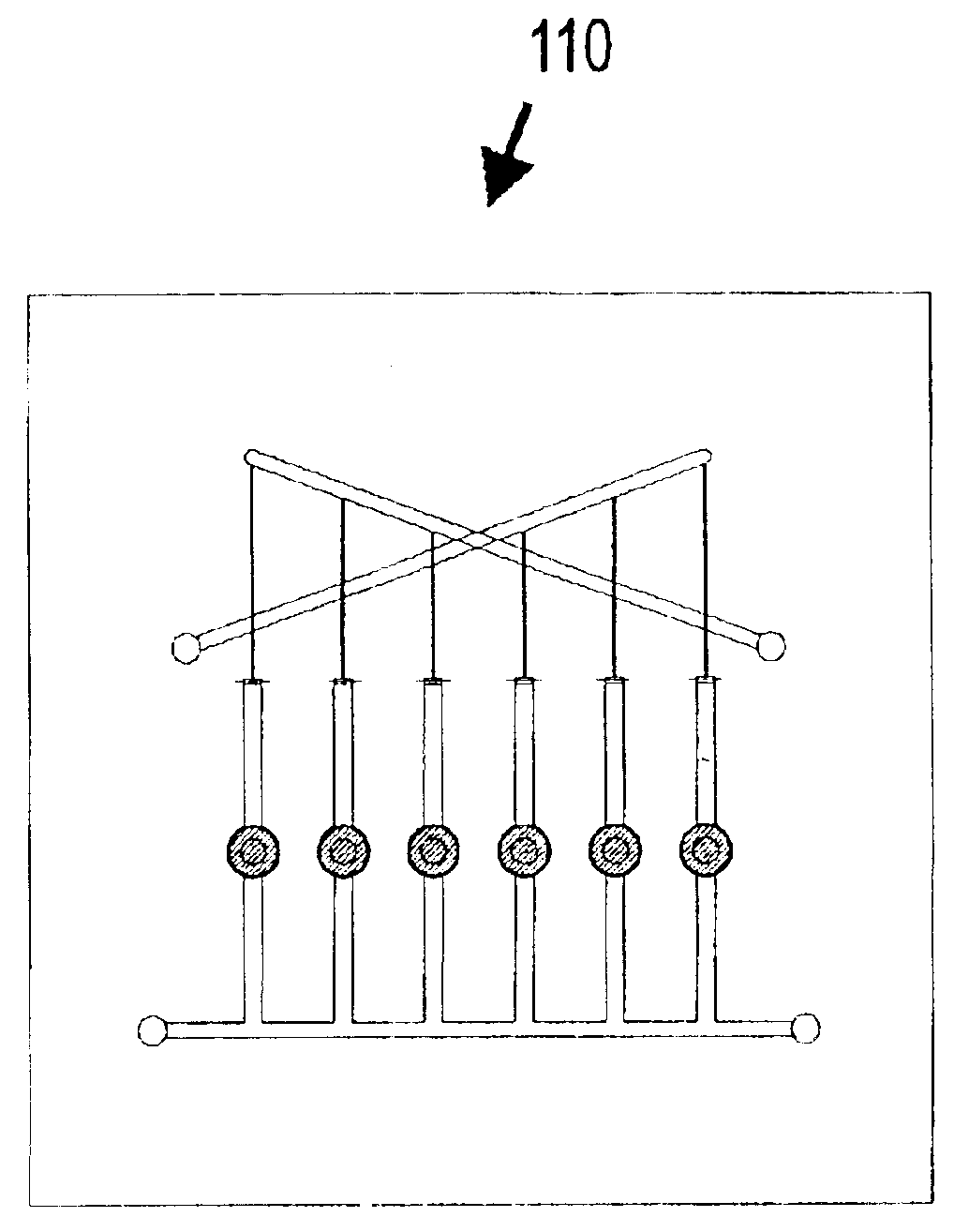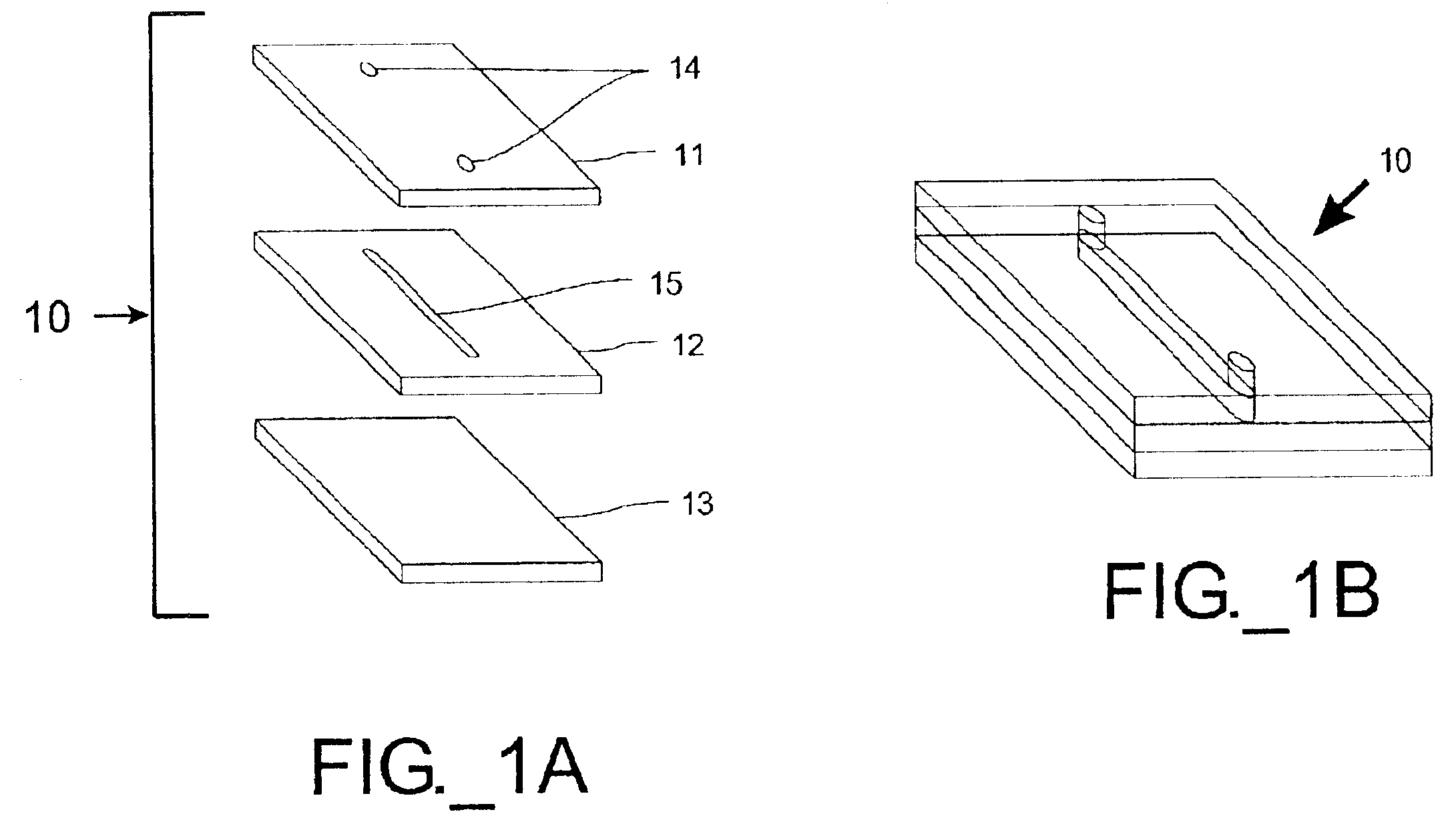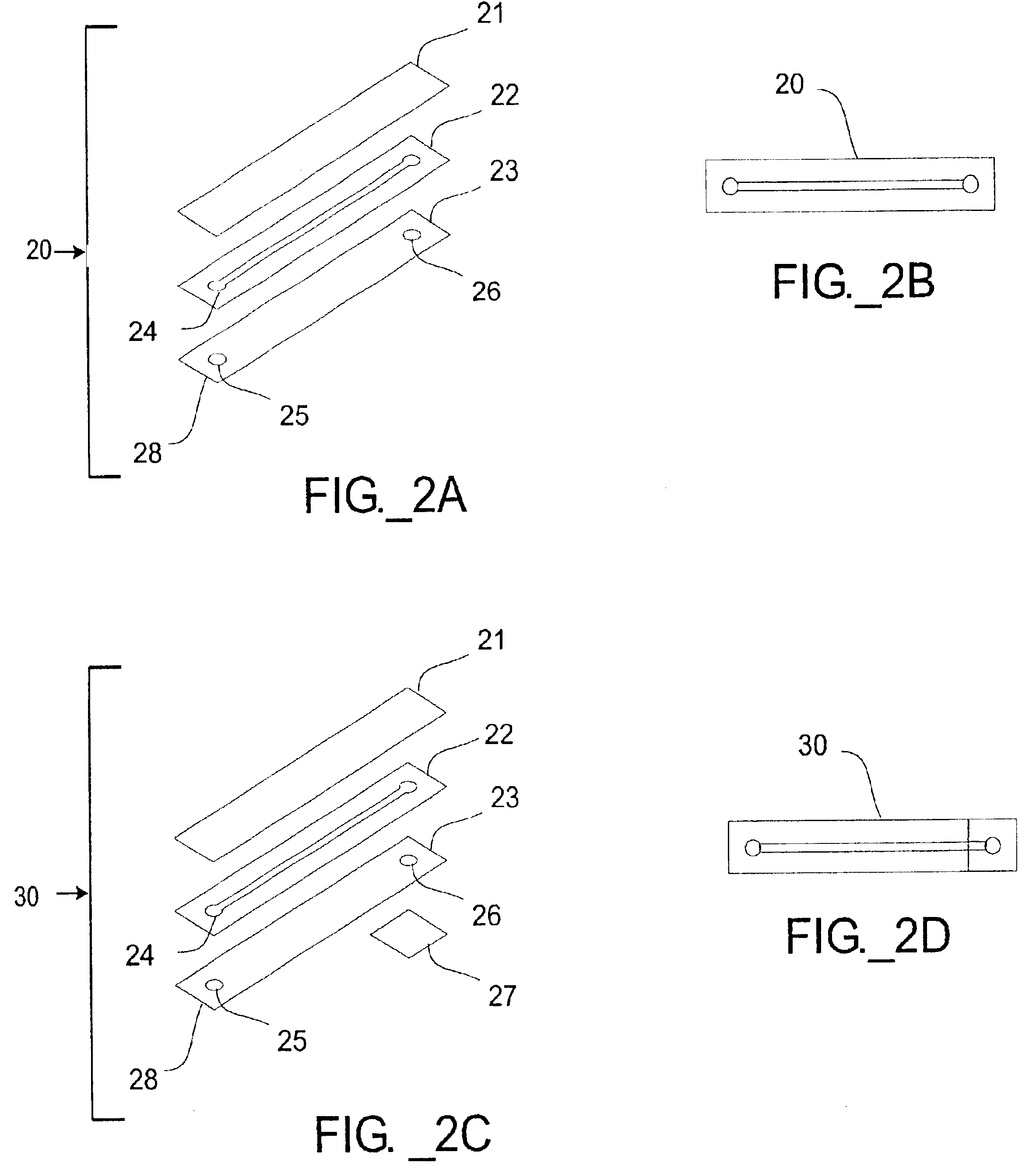Microfluidic analytical devices and methods
a microfluidic and analytical device technology, applied in the field of microfluidic analysis devices and methods, can solve the problems of high tool-up costs for both of these techniques, complex biochemical reactions, and inability to quickly prototyping and manufacture flexibility
- Summary
- Abstract
- Description
- Claims
- Application Information
AI Technical Summary
Problems solved by technology
Method used
Image
Examples
Embodiment Construction
Definitions:
[0031]The term “channel” or “chamber” as used herein is to be interpreted in a broad sense. Thus, it is not intended to be restricted to elongated configurations where the transverse or longitudinal dimension greatly exceeds the diameter or cross-sectional dimension. Rather, such terms are meant to comprise cavities or tunnels of any desired shape or configuration through which liquids may be directed. Such a fluid cavity may, for example, comprise a flow-through cell where fluid is to be continually passed or, alternatively, a chamber for holding a specified, discrete amount of fluid for a specified amount of time. “Channels” and “chambers” may be filled or may contain internal structures comprising, for example, valves, filters, and similar or equivalent components and materials.
[0032]The term “detection” as used herein is to be interpreted broadly to include qualitative and / or quantitative methods. Analytical techniques may be used to detect analytes either within a m...
PUM
| Property | Measurement | Unit |
|---|---|---|
| length | aaaaa | aaaaa |
| length | aaaaa | aaaaa |
| pore size | aaaaa | aaaaa |
Abstract
Description
Claims
Application Information
 Login to View More
Login to View More - R&D
- Intellectual Property
- Life Sciences
- Materials
- Tech Scout
- Unparalleled Data Quality
- Higher Quality Content
- 60% Fewer Hallucinations
Browse by: Latest US Patents, China's latest patents, Technical Efficacy Thesaurus, Application Domain, Technology Topic, Popular Technical Reports.
© 2025 PatSnap. All rights reserved.Legal|Privacy policy|Modern Slavery Act Transparency Statement|Sitemap|About US| Contact US: help@patsnap.com



